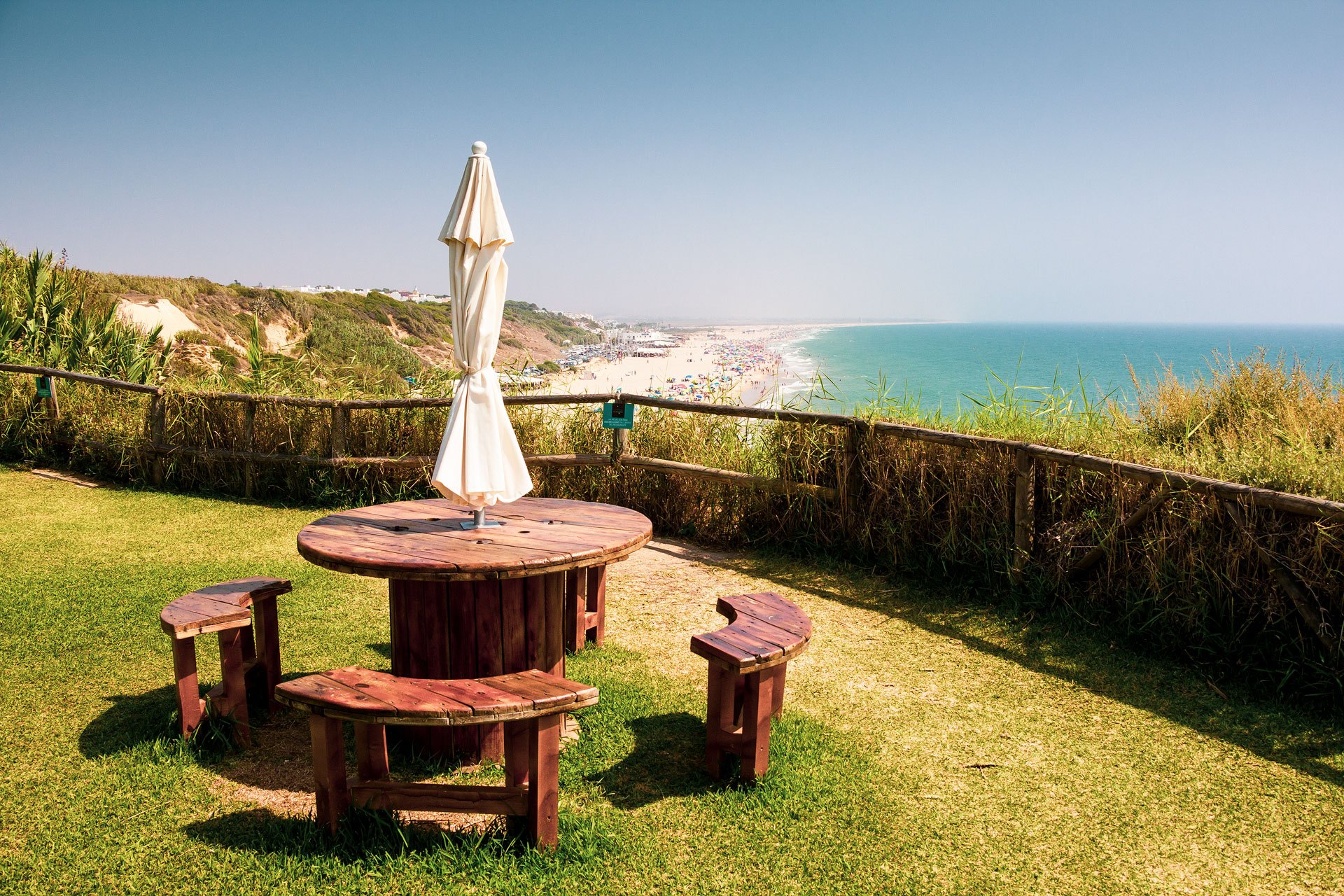
Coming to Conil de la Frontera was a part of our vacation plan to travel along the coasts of Andalusia. One of your Spanish friends recommended us to visit Conil and it turned out to be a great hit. Moreover, every further stop we made turned out to be very interesting…
The traces of human settlements come from prehistory, but the structures of the city were created when the Phoenicians came, who mainly worked as fishermen on the coast. The name of the city probably comes from the Los Conios tribe – a part of Tartessos civilization that lived on these territories around 800 – 500 BC. During the Roman times, Conil became important due to being a part of Via Herculean, a Roman trade route connecting Malaga with Cadiz. After the fall of Roman Empire, Conil was ruled by Visigoths, Byzantines and Vandals until the breakthrough of 711, when the Arabs invaded.
Since 1265, the name of the city changed (as well as of Chiclan, Jerez and Arcos) as a result of Christian victories during Reconquista. To the basic names they added “de la Frontera” indication their location on borders separating Christian influences and territories from the Muslim. In 1299, the king Ferdinand IV of Castile made Alonso Perez de Guzmanow the ruler of Conil. He helped the city to develop and strengthen the defence structures. At that time, the name of the city changed briefly to Torre de Guzman due to the construction of a defence tower which you can still see today in the city centre. It was supposed to protect the kingdom against Arab invaders.
Throughout the next centuries, the city had its ups and downs until the twentieth century when a touristic boom became a large source of income and an opportunity to get rich for the local people. Conil became an enclave of Cadis with the largest interest in tourist investments.
Beaches, above all: beaches – the playas here are beautiful! Wide, some surrounded by cliffs, other spreading over the horizon. I need to admit that Costa de la Luz beaches made a great impression on me. They are truly impressive and are well-appreciated by tourists and, of course, by surfers.
When you walk across the tiny centre of Conil de la Frontera, you will see various bars, restaurants and tapaseries. We ate in a recommended and supposedly legendary bar Los Hermanos, where lots of people gather even before the opening hours. The food is OK, but I wouldn’t say that it makes you go WOW. Well-served and tasty, fresh fish and chocos…. I will stop here for a moment because chocos were something new for me, and a Spanish friend told me to try it in Costa de la Luz (the Coast of the Sun – it spreads from Gibraltar to Huelva).
Chocos is simply a cuttlefish served in various ways: grilled, fried, stewed, baked etc. (a recipe for taste chosos in Conil style can be found in COOKING tab). In the menu of local restaurants, you will often find dishes made from sepia, jibia and choco. The names varies depending on the region – in Andalusia, especially near Huelva, Cadiz and Seville, cuttlefish are known as choco, but in Cantabria, you will mainly see jibia. All in all, all three names mentioned above (jibia, sepia and choco) refer to one animal – a cuttlefish.
We find Conil de Frontera to be a cozy place. Beautiful, wide beaches, perfect conditions for water sports, great food, nice and well-kept streets that make you want to walk through despite the heat. Smiling people and the atmosphere that reminded me the one I love seeing in Tarifa – it remind me of a hippie casualty ☺ Not to mention the dishevelled surfers, who walk across the narrow alleys in flip-flops or barefoot, always carrying surfboards under their armpits…
Un Saludo:)!
Back
Related articles
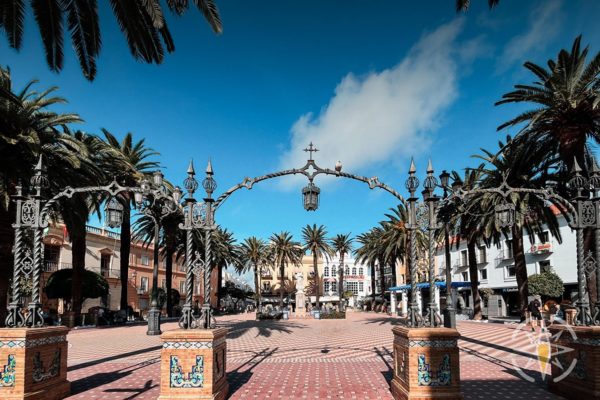
The city is located on the Guadiana river shore - the natural border between Spain and Portugal
Read more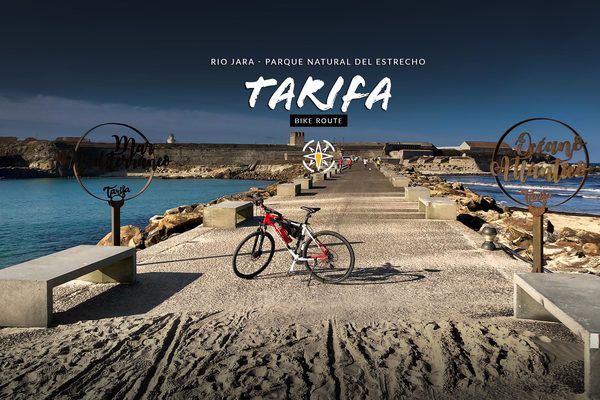
Enjoy a fantastic view of Africa!
Read more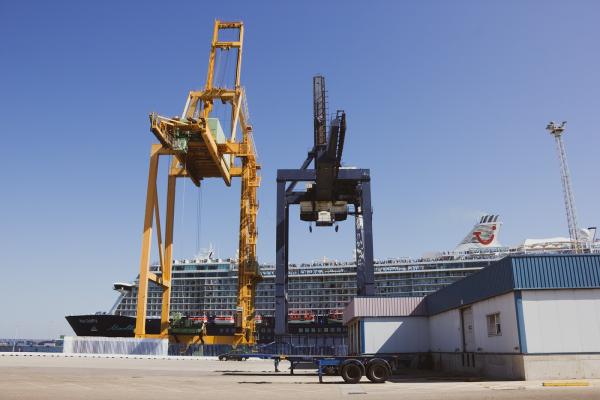
It is a perfect place for people who wish to visit Cadiz
Read more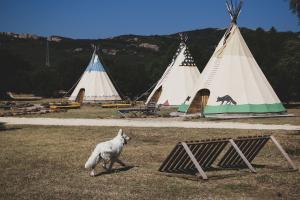
Passing through the Parque Natural Los Alcornocales we saw an unusual view of Indian tepees picturesquely situated on the shores of a lake...
Read more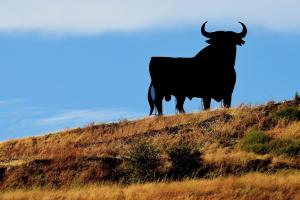
While traveling across Spain, I noticed impressive constructions representing a big black bull. What are those, and who designed them?
Read more